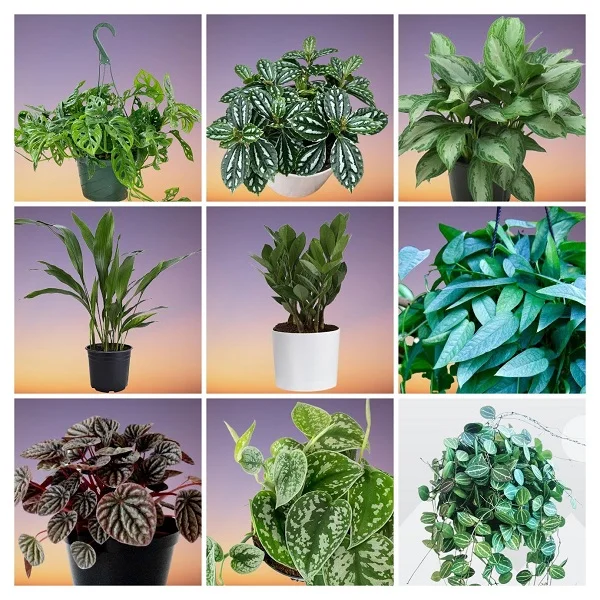Boston Fern (Nephrolepis exaltata 'Bostoniensis') Indoor Care, Propagation and Problems
Some links in this post may be affiliate links
Boston Fern (Nephrolepis exaltata 'Bostoniensis') flourishes in bright indirect light, warm and humid conditions and consistently moist, rich, well-drained, all purpose soil coupled with fortnightly feeding in the growing season.
Boston Fern (Nephrolepis exaltata 'Bostoniensis') is among the popular fern plants with gracefully arching highly compound, fronds and leaves whose edges appear slightly serrate.
The spores in Boston Fern are warty and wrinkled. The fern spreads by means of an underground rhizome that is slim and tuberous.
Boston Fern is a mutation of Nephrolepis exaltata (Sword Fern), which was discovered in Boston about a hundred years ago and hence the name.
Boston Fern can be displayed on a pedestal, in a hanging basket, a tabletop, desktop, plant shelf, as a specimen plant or as a part of a grouping. It is one of the best plants for hanging baskets.

Botanical name: Nephrolepis exaltata 'Bostoniensis'
Family: Nephrolepidaceae
Origin
Nephrolepis exaltata 'Bostoniensis' is native to the tropical regions in America, Polynesia and Africa. It can grow both terrestrially or epiphytically.
Size
Boston Fern is a fast growing fern which can grow to a height of to 2-3 feet and upto 3 feet wide.
Toxicity
Boston Ferns (Nephrolepis exaltata 'Bostoniensis') are non-toxic to humans and pets as outlined by ASPCA. The ferns are safe to grow indoors.
Where to Buy
Boston Ferns are a pleasant addition to your plant collection, you may obtain them online from Etsy (Link to Etsy) or from Amazon (Link to Amazon).
Nephrolepis exaltata 'Bostoniensis' Indoor Care
Boston Fern (Nephrolepis exaltata 'Bostoniensis') does well in bright indirect light, average warmth of 15-250C, humidity of 60-70% and consistently moist, fertile, well-drained, all purpose soil coupled with fortnightly feeding during the growing season.
Nephrolepis exaltata 'Bostoniensis' requires repotting every 2-3 years to provide adequate space for the growth of the rhizome and prevent plant death. Regular pruning is necessary to keep it neat and tidy as well as discourage pest and disease infestation. Keep reading for a detailed account on these growing conditions and how to provide them.

Light Requirements
Boston Fern grows best in bright indirect light. Keep it away from direct sunlight as it may scorch the fronds.
Too little light will result in reduced growth and yellowish leaves. If the natural lighting is insufficient, you may grow Boston Fern under grow lights. Check out these full spectrum grow lights on Amazon.
Regularly rotate the pot to ensure that the plant receives light on all sides for uniform growth and to prevent lopsided growth.
Watering
For optimum growth of Boston Fern, water it thoroughly during the growing season to keep the soil evenly moist at all times.
Cut down on watering during cold season as growth is minimal at this time to keep the soil slightly moist but do not allow it to dry out completely.
Ensure the pot has a drainage hole to prevent the soil from getting soggy as it can result in rotting and death of the fern. Learn more on how to water indoor plants the correct way.
Temperature and Humidity
Average warmth of 15-250C is ideal for Boston Fern. Keep it away from drafty situations as sudden drops in temperature can cause leaf drop and reduced growth.
Boston Fern thrives in high humidity of 60-70%. The fern is ideal for humid areas like a well-lit bathroom, kitchen or laundry area. Set the pot on a wet pebble tray or use a cool mist humidifier to raise humidity.
Related: 18 Low-light Bathroom Plants that Absorb Moisture & Freshen the Air
Fertilizer
Feed Boston Fern with a liquid, water-soluble fertilizer every 2-3 weeks during the growing period. Do not feed during the cold season as growth is reduced at this time.
Potting Soil
The best soil for Boston Fern should be rich in organic matter and free-draining to prevent it from getting soggy while providing the required nutrients. All purpose potting mixes are ideal for this fern.
Repotting
Repot Boston Fern every 2-3 years at the beginning of the growing season to provide adequate room for the growth of the rhizome.
One sign of an overcrowded fern is wilting leaves. Failure to repot an overcrowded fern can result in death of the plant.
Repot it into a pot that is 1 size larger and one that has drainage hole to prevent the soil from getting soggy as it can lead to rotting. Check out these pots with drainage holes on Amazon.
You may also be divide the fern into several sections during repotting and pot the sections individually to propagate new plants.
Pruning
Pruning Boston Fern is easy. Remove dead and damaged fronds to keep the fern neat and tidy. As it ages, the older fronds turn brown. Cut them off at the base to maintain the fern looking neat and tidy as well as discourage pest and disease infestation.
Propagation
Boston Fern (Nephrolepis exaltata 'Bostoniensis') propagation can be done by division at the beginning of the growing season. It can also be propagated from spores but they are difficult to grow.
How to propagate Boston Fern by plant division
Carefully take out your Boston Fern from its pot and divide the rhizome into several sections. Ensure each section has adequate roots.
Pot these sections into individual pots while ensuring that you do not bury the rhizomes too deep but maintain the soil level that they were at in the previous pot.
Place the pots in a warm, brightly-lit place away from direct sunlight and maintain the soil moist through out until the new Boston Fern are well established after which routine care can begin.

Nephrolepis exaltata 'Bostoniensis' Problems
Boston Fern (Nephrolepis exaltata 'Bostoniensis') problems include brown leaf tips, wilting, yellow leaves, leaf drop, brown leaves, pests and diseases among others. Keep reading for more on these problems and how to fix them.
Brown dots or lines on the underside of fronds
These are spores which can be used for propagation of new Boston Ferns. They indicate that the frond is mature and healthy. In their natural environment, these spores drop to the soil and grow into new Boston Ferns.
Yellowing, brown leaf tips and no growth
The cause of yellowing fronds, brown tips and no new growth in Boston Fern is dry air. To raise humidity, set the pot on a wet pebble tray or use a cool mist humidifier. Learn more on how to increase humidity for houseplants.
Pests
Common pest in Boston Fern are scales and mealy bugs. Isolate the affected fern to avoid spread to other plants and treat appropriately. Learn how to identify and control houseplants pests.
Brown shells scattered on the fronds
Brown shells scattered on fronds of Boston Fern is an indication of scales infestation. Isolate the affected fern to avoid spread to other houseplants and treat appropriately.
Yellowing fronds
Soggy soil is the reason for yellowing leaves in Boston Fern. Ensure the pot has a drainage hole and the soil is free-draining to prevent the soil from getting soggy.
Wilting leaves
Wilting leaves in Boston Fern is an indication of overcrowding in the current pot. Repot the Fern into a larger pot or divide it up for more ferns.
Excessive leaf drop
Leaflets drop in Boston Fern is indicative of too dry soil. Maintain the soil slightly moist and do not allow it to dry out completely for an extended period of time.
Isolated brown and yellow leaves
Browning and yellowing isolated areas in Boston Fern are a result of excessive salts in the soil either from watering or fertilizers. Regularly flush out the salts by repeatedly running a steady stream of water thorough the soil and avoid overfertilizing in the future.
You liked it? Share on social media.
Related Content
Amazon Associates Disclosure
Homeplantsguide.com is a participant in the Amazon Services LLC Associates Program, an affiliate advertising program designed to provide a means for sites to earn advertising fees by advertising and linking to amazon.com.





